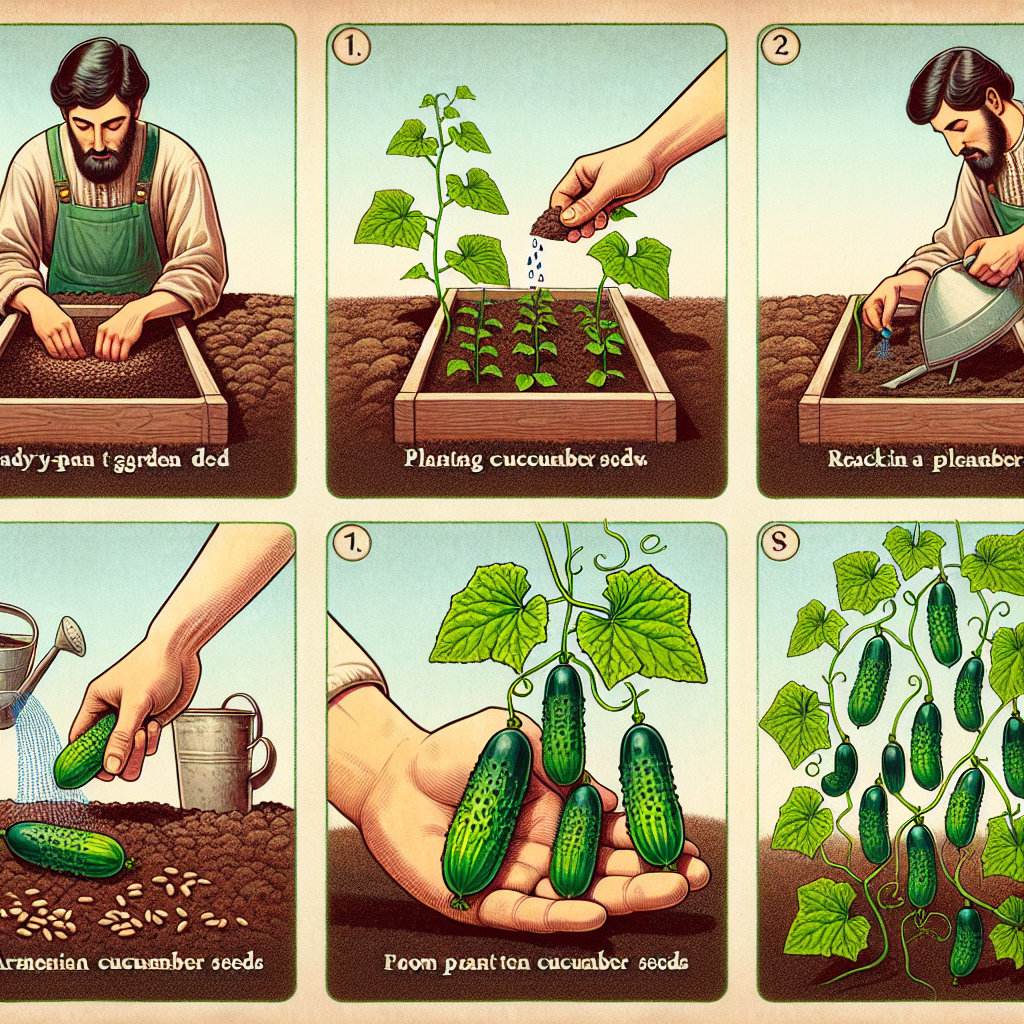
How to plant armenian cucumbers
How to Plant Armenian Cucumbers: A Comprehensive Guide
If you're looking to diversify your garden with a unique and refreshing vegetable, then consider planting **Armenian cucumbers**. Despite their name, Armenian cucumbers (Cucumis melo var. flexuosus) are actually more closely related to melons than the traditional cucumbers. Known for their elongated shape and sweet flavor, these cucumbers are a fantastic addition to salads, pickling recipes, or simply eating fresh. In this guide, we will teach you how to successfully grow Armenian cucumbers, from preparation to harvest.
Understanding Armenian Cucumbers
Before diving into the specifics of how to plant Armenian cucumbers, it's important to understand what they are and their growing requirements. Armenian cucumbers are heat-loving plants that thrive in warm weather and rich soil. They're distinct due to their curled shape and can grow up to 30 inches long. These cucumbers are ideal for those living in warmer climates, but they can also be grown in cooler areas with proper care.
Choosing the Right Time to Plant
The timing of your planting is crucial for success. Armenian cucumbers are sensitive to frost and should only be planted once the danger of frost has passed and the soil temperature reaches at least 70°F (21°C).
- Zone Consideration: Determine your garden's USDA hardiness zone to understand when to plant. For most regions, the ideal planting time is late spring to early summer.
- Soil Temperature: Use a soil thermometer to check that soil temperatures are consistently warm before planting.
Preparing Your Garden Bed
Proper preparation of your garden bed is essential for healthy growth. Here’s how to prepare:
- Select the Location: Choose a location with full sun, where the plants can receive at least 6-8 hours of sunlight daily.
- Soil Quality: Ensure the soil is well-draining. You can improve drainage by mixing in organic matter such as compost or well-aged manure.
- Soil pH: Aim for a soil pH of 6.0 to 6.8. You can test your soil pH with a home testing kit and amend it if necessary.
How to Plant Armenian Cucumbers
Now that your garden bed is ready, let’s cover the planting process.
Option 1: Direct Sowing
If your soil is warm enough, you can sow seeds directly into the garden:
- Seed Depth: Plant seeds about 1 inch deep, spaced approximately 12 inches apart. You can drop 2-3 seeds per hole.
- Rows: Space rows about 36-48 inches apart to allow for proper airflow and access.
- Watering: Water thoroughly after planting, making sure the soil remains consistently moist but not soggy.
Option 2: Starting Indoors
If you’re in a cooler climate or wish to get a head start, consider starting seeds indoors:
- Seed Trays: Use seed trays filled with a seed-starting mix. Plant 2-3 seeds per cell about 1 inch deep.
- Light and Heat: Provide warmth and bright light, ensuring they receive at least 12-16 hours of light a day. A grow light can be handy.
- Hardening Off: Once the seedlings have developed 2-3 true leaves, harden them off by gradually exposing them to outdoor conditions over a week.
Supporting Your Armenian Cucumbers
Armenian cucumbers can benefit significantly from vertical growing. Here are some methods to provide support:
- Trellises: Create a trellis using wooden stakes and wire, or purchase a pre-made trellis. This allows the cucumbers to climb and helps improve air circulation.
- Cages: A cage can provide support and protect against pests. Ensure the cage is at least 3-4 feet tall.
Watering and Fertilization
Like all cucumbers, Armenian cucumbers will thrive with consistent moisture but can suffer from rot if overwatered. Follow these guidelines for watering and fertilizing:
- Watering Schedule: Water deeply once a week, or more frequently in very hot weather.
- Mulching: Apply a layer of mulch around the plants to retain moisture and suppress weeds.
- Fertilization: Use a balanced fertilizer at planting time, and then again after the flowers have set. Look for an NPK ratio of 5-10-10.
Pest and Disease Management
While Armenian cucumbers are generally resilient, they can be susceptible to various pests and diseases. Here's how to manage potential issues:
- Common Pests: Watch for aphids, cucumber beetles, and spider mites. Use insecticidal soap or neem oil to control infestations.
- Disease Prevention: Ensure proper spacing for airflow, rotate crops each year, and plant disease-resistant varieties if available.
Harvesting Armenian Cucumbers
One of the most rewarding aspects of planting Armenian cucumbers is the harvest. Here are some tips on when and how to harvest:
- Timing: Harvest when the cucumbers are about 12-18 inches long and firm to the touch. Pick them before they turn yellow for the best flavor.
- Cutting: Use a sharp knife or scissors to cut the cucumbers from the vine cleanly, which will help prevent damage to the plant.
- Regular Picking: Regularly harvesting will encourage the plant to produce more fruit throughout the season.
Storing and Using Armenian Cucumbers
Once you've harvested your Armenian cucumbers, you’ll want to store and enjoy them properly:
- Storage: Store harvested cucumbers in a cool, dry place or refrigerate them for up to a week. Avoid washing them until just before use to prolong their freshness.
- Usage Ideas: Use Armenian cucumbers in fresh salads, as snacks with dip, or pickle them for a delightful treat.
Conclusion
By following these guidelines on how to plant Armenian cucumbers, you will be well on your way to enjoying a fruitful garden season. Their unique flavor and impressive appearance can add a delightful twist to your gardening experience, paving the way for delicious meals throughout summer. Remember to maintain proper care, monitor for pests, and enjoy the process of cultivating these remarkable vegetables!
By Guest, Published on September 25th, 2024